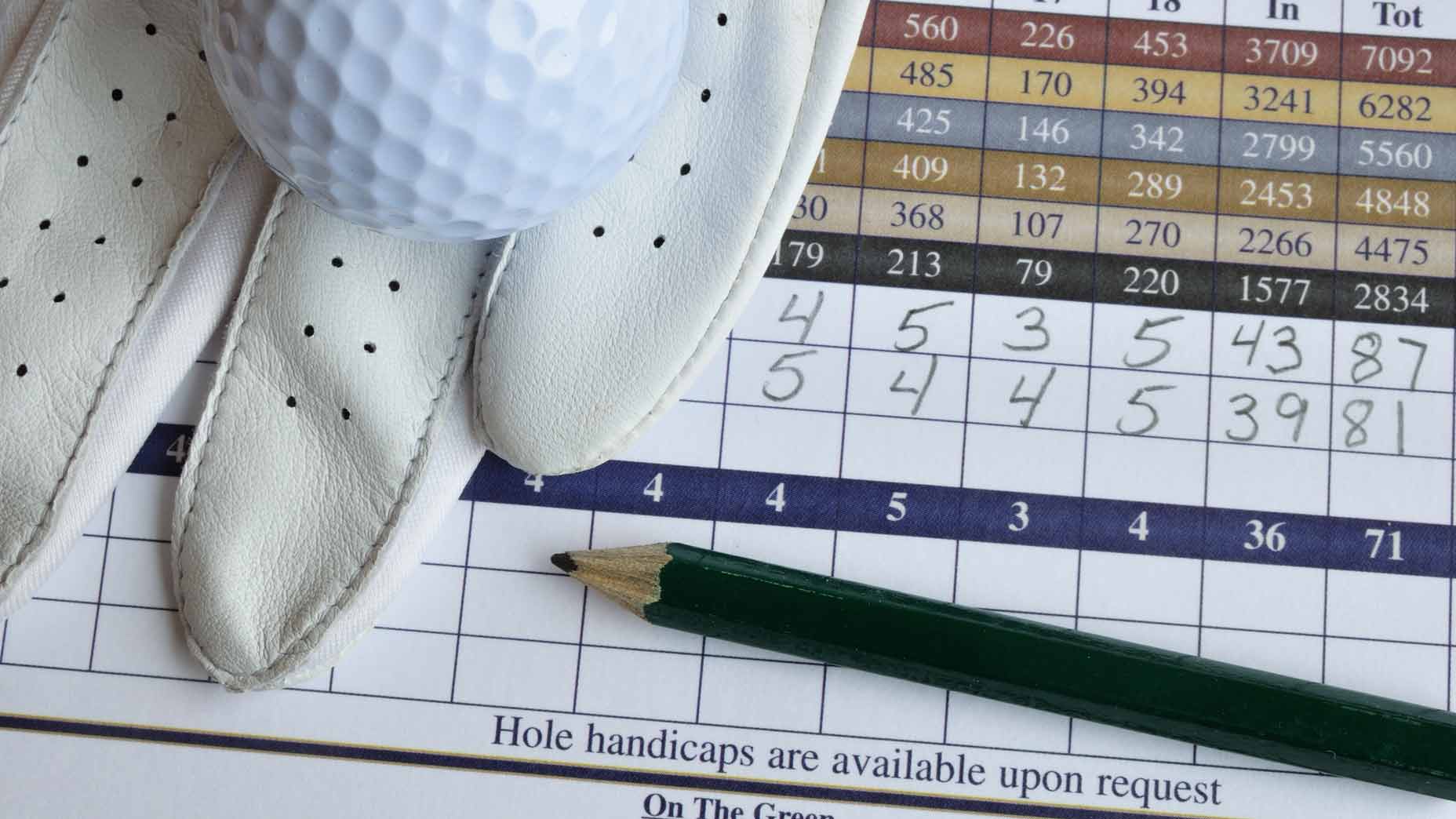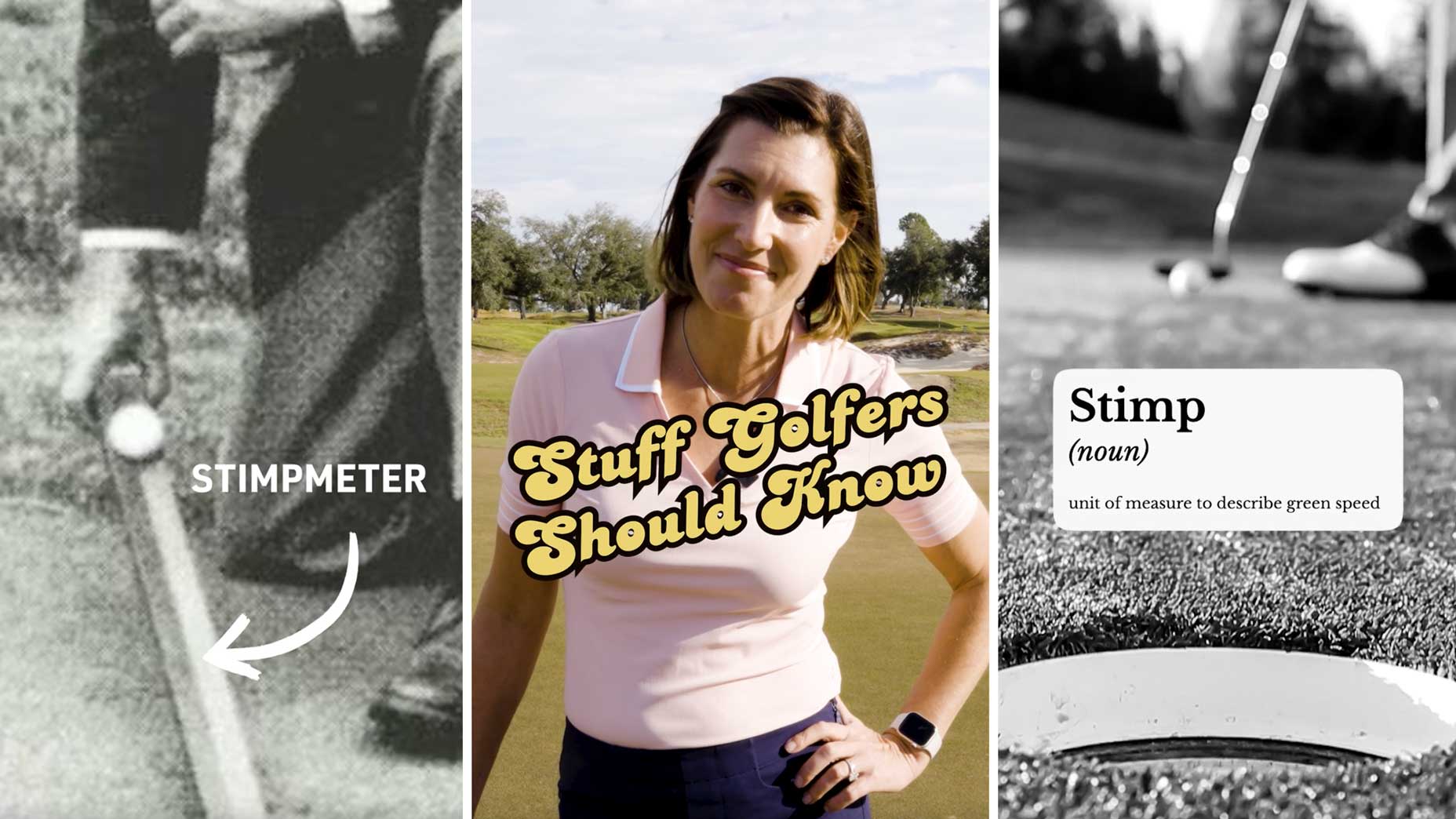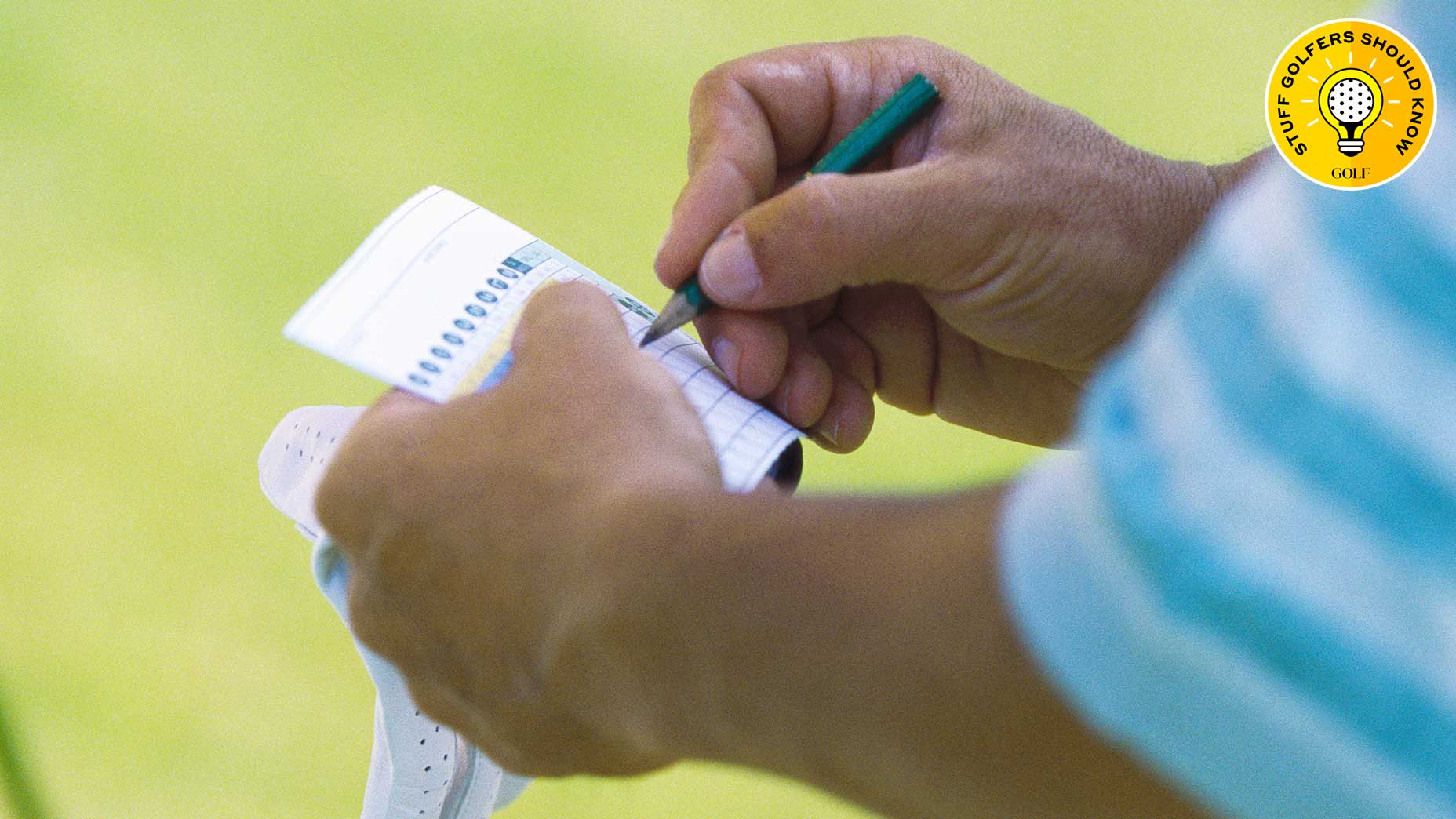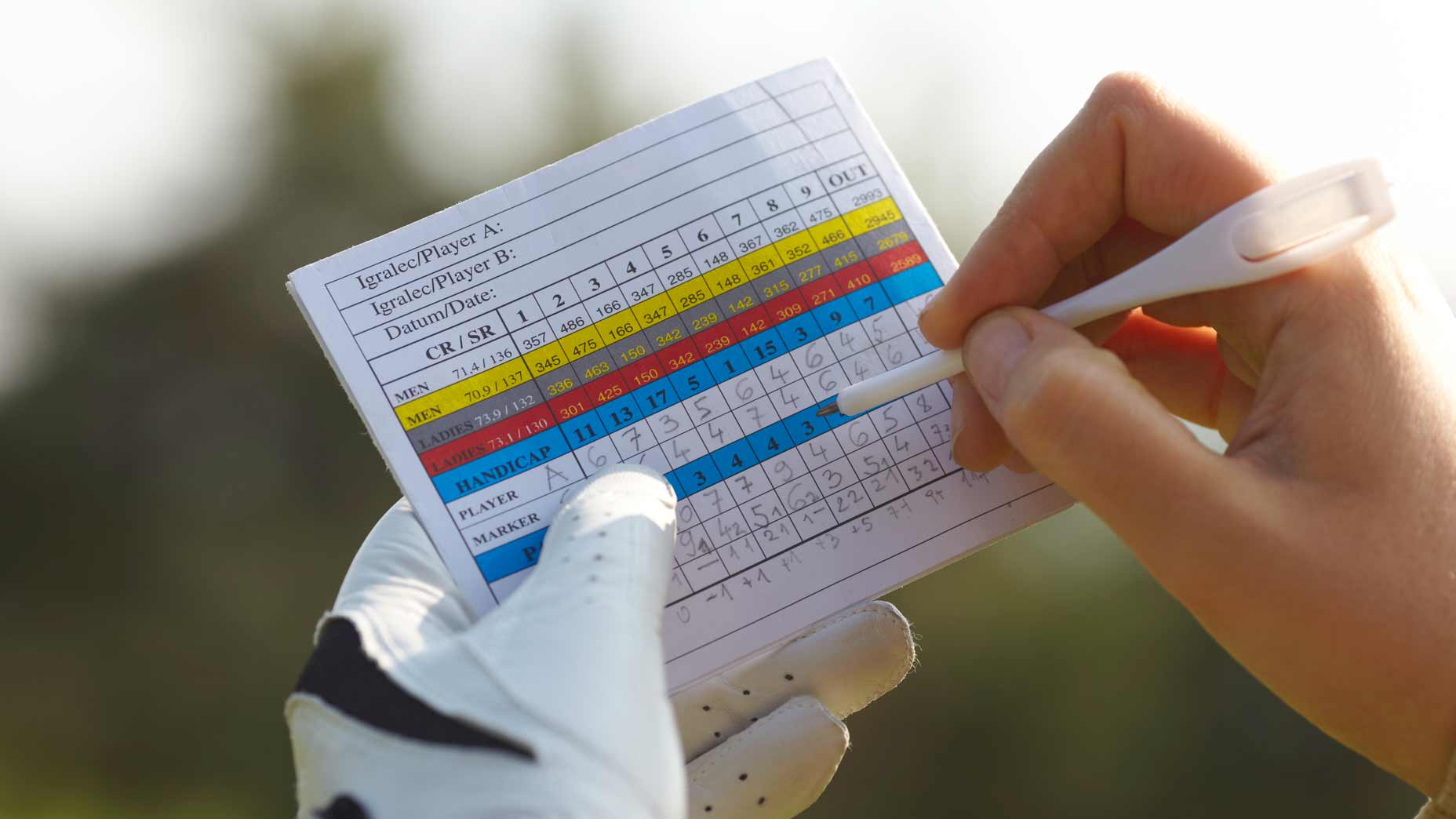What is a golf handicap, and how is it calculated?
- Share on Facebook
- Share on Twitter
- Share by Email

Find out everything you need to know about golf handicaps below.
Getty Images
Golf handicaps are an essential aspect of the game. But there’s a lot to learn about them, and at times they can get complicated.
Whether you are a beginner golfer who is trying to get their first handicap, or an experienced player hoping to freshen up on some of the lingo and details, we can help.
Here’s everything you need to know about golf handicaps.
What is a handicap in golf?
Let’s start with the basics. Handicaps exist to measure a golfer’s ability. While golfers usually use the simplified “handicap” term, the official term is “Handicap Index.”
5 things you *need* to know to understand Handicap IndexesBy: Zephyr Melton
Generally speaking, a Handicap Index measures your ability in relation to a scratch golfer. For example, a golfer with a Handicap Index of 15.0 will generally shoot 15 strokes higher than a scratch golfer on a course of standard difficulty.
While important for tracking your progress and ability, handicaps are also essential for fair play. Handicaps allow players of different abilities to play competitively against each other. However, when it comes time to play against others, you’ll use your Playing Handicap instead of your Handicap Index.
Handicaps in match play
While a Handicap Index travels with you from course to course, a Playing Handicap takes into account the course and tees you are playing, as well as the format. In match play, golfers use their Playing Handicaps to determine how many shots each player will receive compared to their opponents.
For example, if a player with a Playing Handicap of 15 faces a player with a Playing Handicap of 5, the first player will receive 10 strokes over the course of the round. More accurately, that 15-handicap will receive a one-stroke advantage over his opponent on the 10 most difficult holes on the course. On those 10 holes, the 15-handicap gets to deduct one stroke from his score to determine
How do you figure out your Handicap Index?
A golfer can get a Handicap Index with as few as 54 holes played, made up of 9- and/or 18-hole scores. Once 20 scores are posted, only your eight best Score Differentials among those 20 are used to determine your Handicap Index. It’s also important to note that your Handicap Index is not meant to predict what you will shoot in a given round, or even your average score.
This surprising state has best average handicap index in the U.S.By: Kevin Cunningham
It’s also important to note that your Handicap Index is not meant to predict what you will shoot in a given round, or even your average score.
Instead, the USGA states that a player should shoot their Handicap Index 20-25% of the time.
Additionally, given the nature of how a Handicap Index is calculated, a golfer should not expect one round to dramatically change their Handicap Index. While it often won’t change much from one score, keep in mind there are safeguards built into the calculation to account for exceptional scores or extreme upward movement in a Handicap Index
Where to get a Handicap Index
While Playing Handicaps are determined before a round, players don’t calculate their Handicap Index. Instead, they enter their scores into a score posting product, such as the GHIN (Golf Handicap and Information Network) app. The best place to get your handicap is directly from the USGA. All you need to do is enter your state, zip code and contact information and pay the annual fee set by your local Allied Golf Association.
Once you set up your handicap, you’ll receive a Handicap ID (e.g., GHIN identification number) that you can use to post your scores at golf courses, country clubs and elsewhere. To make life easier, you can use the GHIN mobile app to post scores.
What is a plus handicap?
When talking handicaps, you might hear people refer to “plus” handicaps. Not many golfers are in this category (according to the USGA, 0.75% of female golfers and just shy of 2% of male players have a plus Handicap Index).
But players who consistently break par, such as PGA Tour pros, usually have a plus handicap. The golfer with a plus Handicap Index performs better than the scratch golfer and is typically giving several shots when playing in a match using handicap strokes.
Latest In Instruction

Kevin Cunningham
Golf.com Editor
As senior managing producer for GOLF.com, Cunningham edits, writes and publishes stories on GOLF.com, and manages the brand’s e-newsletters, which reach more than 1.4 million subscribers each month. A former two-time intern, he also helps keep GOLF.com humming outside the news-breaking stories and service content provided by our reporters and writers, and works with the tech team in the development of new products and innovative ways to deliver an engaging site to our audience.











